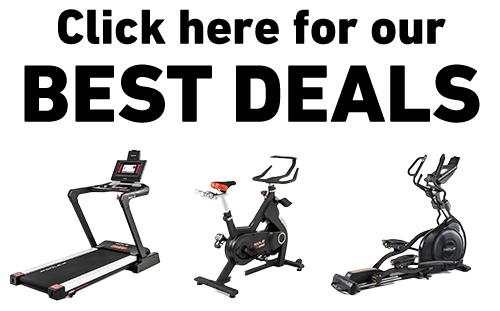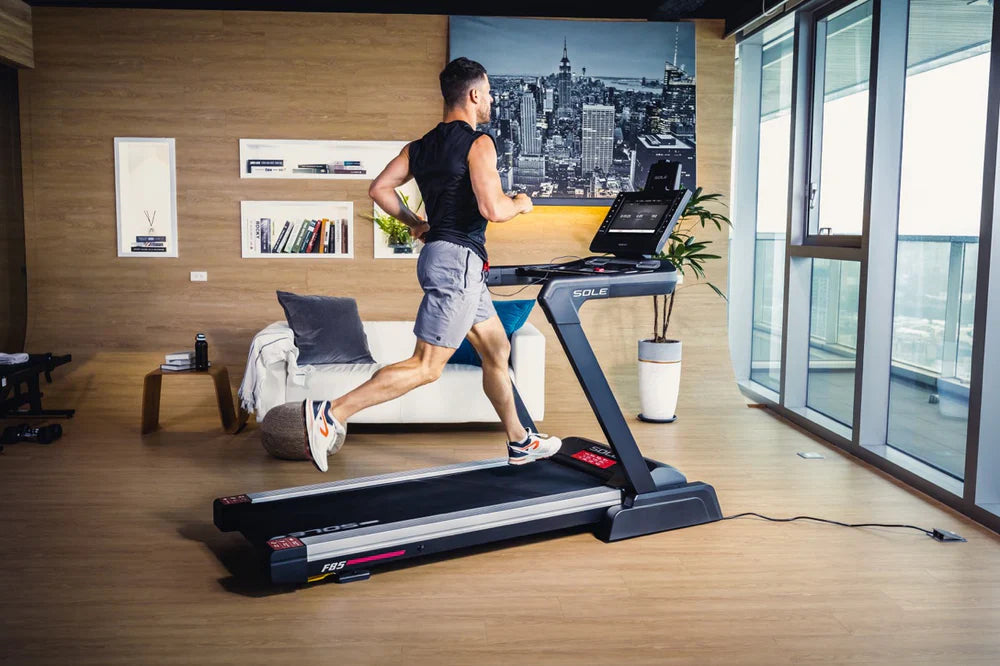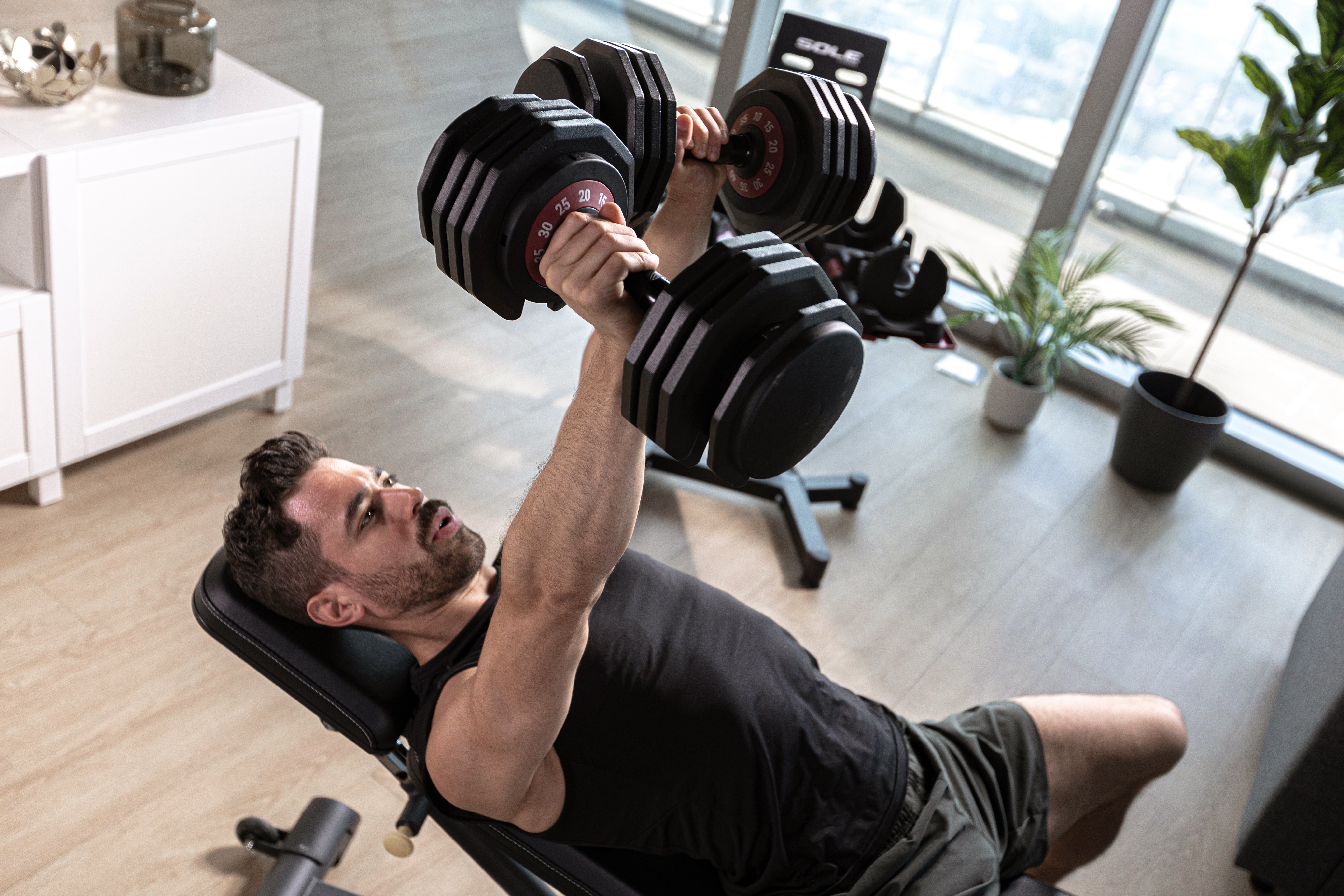Key Takeaways
- Treadmill running can feel easier than road running due to the consistent pace and controlled environment.
- To simulate outdoor running on a treadmill, set the incline to 1% to account for wind resistance and uneven terrain.
- Environmental factors like weather and surface type significantly affect road running pace.
- Use a treadmill pace chart to help convert treadmill speed settings to outdoor running paces.
- SOLE treadmills make it easy to match your indoor and outdoor running speeds, so you can crush your training goals no matter where you're logging those miles.
Treadmill vs Road Pace Essentials
Core Differences
Running on a treadmill and running on the road can feel like two completely different activities.
The treadmill allows a controlled environment where you can adjust speed and incline with the push of a button.
Here’s a simple breakdown of the main differences:
- Environment: Treadmills provide a stable, climate-controlled setting.
- Surface: Roads can vary from asphalt to gravel, affecting impact and traction.
- Consistency: Treadmills maintain a constant pace, while road running requires self-regulation.
- Resistance: Wind and incline changes on roads can increase effort.
Why Pacing Matters
Pacing determines how efficiently you use your energy and how well you can sustain your speed over a distance. Proper pacing helps prevent burnout and injuries, allowing you to improve over time.
Impact on Training
Incorporating both treadmill and road running into your training can offer a balanced approach.
Treadmills allow for precise control over speed and incline, which is excellent for interval training and specific pace work. Road running, however, builds endurance and adapts your body to real-world conditions.
|
At SOLE, we're proud to offer top-quality exercise equipment designed for home and gym use. Our machines are built to meet the highest standards of durability and performance, making them ideal for fitness enthusiasts at any level. SOLE Products
|
Key Factors Influencing Running Pace
Environmental Conditions
Weather is a significant factor; running in hot, cold, or windy conditions can affect your speed and stamina.
The type of surface you're running on—be it asphalt, dirt, or gravel—can influence your pace due to differing levels of traction and impact.
Treadmill running eliminates these variables, providing a consistent environment that can be adjusted to simulate outdoor conditions to some extent.
This control can be beneficial for those looking to maintain a steady pace or replicate race conditions.
Equipment and Terrain
Treadmills offer a cushioned surface that can reduce impact stress on your joints, potentially allowing for faster speeds with less risk of injury.
However, this cushioning can also make the treadmill feel easier compared to the hard surfaces of road running.
On the road, you might encounter hills, turns, and uneven surfaces that require more effort and adaptability.
Effort and Resistance
When running, the amount of effort you exert is influenced by resistance factors.
On a treadmill, resistance is mainly controlled by the machine's settings, allowing you to adjust incline and speed easily. However, you might notice that running on a treadmill feels slightly easier.
This is because the moving belt helps propel you forward, reducing the effort needed compared to outdoor running. Road running requires you to generate all the forward momentum yourself. You also face wind resistance, which can significantly impact your pace, especially on windy days.
To mimic outdoor conditions on a treadmill, it's often recommended to set the incline to 1%. This adjustment compensates for the lack of wind resistance and the slight assistance provided by the treadmill belt.
Calculating Treadmill Pace
Most treadmills display speed in miles per hour (mph) or kilometers per hour (kph), which can be converted into pace (minutes per mile or kilometer). Knowing your pace helps you maintain consistency and track improvements over time.
To convert speed to pace, you can use the following formula:
- Pace (min/mile) = 60 / Speed (mph)
For example, if you're running at 6 mph on the treadmill, your pace is 10 minutes per mile. This simple calculation allows you to adjust your treadmill settings to match your desired pace.
Besides speed, incline is another critical factor in treadmill training. Increasing the incline simulates uphill running, adding intensity and resistance to your workout. This can help build strength and endurance, making you a more versatile runner.
Using Treadmill Settings
Treadmills like SOLE treadmills offer a variety of options to customize your workout.
You can adjust the speed and incline to match your training goals, it doesn’t matter if you're focusing on endurance, speed, or hill workouts. Many treadmills also feature pre-set programs that vary the intensity throughout the session, providing a structured and challenging workout.
But always start your session with a warm-up to prepare your body for exercise. Begin at a comfortable walking pace and gradually increase the speed and incline. Once warmed up, you can adjust the settings to your desired pace and intensity. Always cool down after your workout by gradually reducing the speed and incline to allow your body to recover.
Incline Adjustments
A slight incline of 1-2% can simulate outdoor conditions, while steeper inclines can mimic hill running. Incorporating incline training can improve your cardiovascular fitness, leg strength, and running economy.
When using incline settings, start with a moderate increase and gradually work your way up to steeper inclines.
Converting Treadmill to Road Pace
The primary goal of converting treadmill pace is to match the effort level you experience on the treadmill with what you'd feel on the road.
One common method is to use a treadmill pace chart, which provides equivalent outdoor paces based on treadmill speed and incline (image courtesy of Laura Norris Running).
These charts can be found online and are a valuable tool for runners looking to bridge the gap between indoor and outdoor training.
General Conversion Guidelines
When converting treadmill pace to road pace, consider the following guidelines:
- Set the treadmill incline to 1% to account for wind resistance and terrain variations.
- Use a pace chart or calculator to find equivalent road paces.
- Adjust for environmental factors such as temperature and humidity, which can affect outdoor running.
Tools and Apps
Several tools and apps can assist in converting treadmill pace to road pace. These resources often include calculators, charts, and training plans narrowed to individual needs.
- Running Apps: Apps like Strava and Runkeeper track your runs and provide pace conversions.
- Online Calculators: Websites such as HillRunner offer treadmill pace conversion calculators.
- Wearable Devices: Fitness trackers and smartwatches can monitor your pace and provide insights into your performance.
- SOLE+App: Every SOLE treadmill hooks you up with the free SOLE+ App packed with hundreds of killer fitness classes and tons of workout content at your fingertips.
Master Your Pace with SOLE Treadmills
SOLE treadmills are built for accuracy, making them ideal for runners following structured training plans or preparing for race day.
Models like the F80 and F85 use precision calibration and advanced belt technology to ensure the speed you see matches your actual pace—no slippage, no guesswork.
The responsive motors adjust instantly which makes transitioning from treadmill to road running seamless. Whether you're chasing a PR or building endurance, SOLE delivers the reliable performance you need to train with confidence.
Ready to transform your workouts? Check out our collection of SOLE treadmills today!
Frequently Asked Questions (FAQ)
Why is road running pace usually slower than treadmill pace?
Road running often feels slower because of external factors like wind resistance, terrain variability, and the need for self-regulation.
Unlike the treadmill's moving belt, which assists in forward propulsion, outdoor running requires more effort to maintain speed.
How can I simulate road running on a treadmill?
To mimic outdoor conditions on a treadmill, set the incline to 1%. This adjustment compensates for the lack of wind resistance and helps replicate the effort needed for road running.
Also, varying the incline during your run can simulate hills and improve your strength and endurance.
Adding these changes can make your treadmill workouts more effective and prepare you for outdoor runs.
What common mistakes should I avoid when converting paces?
One common mistake is failing to account for incline when converting treadmill pace to road pace. Always set the treadmill incline to 1% to match outdoor conditions.
Another mistake is not adjusting for environmental factors like temperature and humidity when comparing paces. These elements can significantly impact outdoor performance.
Finally, ensure you use reliable tools and calculators for accurate conversions. Miscalculations can lead to ineffective training and unmet goals.
Can elevation profiles affect pace comparison?
Yes, elevation profiles can significantly impact pace comparison. Running on hilly terrain requires more effort and can slow your pace compared to flat surfaces.
Treadmills can simulate elevation changes through incline settings, but they don't fully replicate the variability and challenge of natural hills.
When training for races with elevation changes, include hill workouts both on the treadmill and outdoors.
Are there specific treadmills that provide more accurate pacing?
SOLE treadmill models such as the F85 and F80 come with advanced features like built-in sensors and connectivity to running apps for more accurate pacing and tracking.




Leave a comment
This site is protected by hCaptcha and the hCaptcha Privacy Policy and Terms of Service apply.